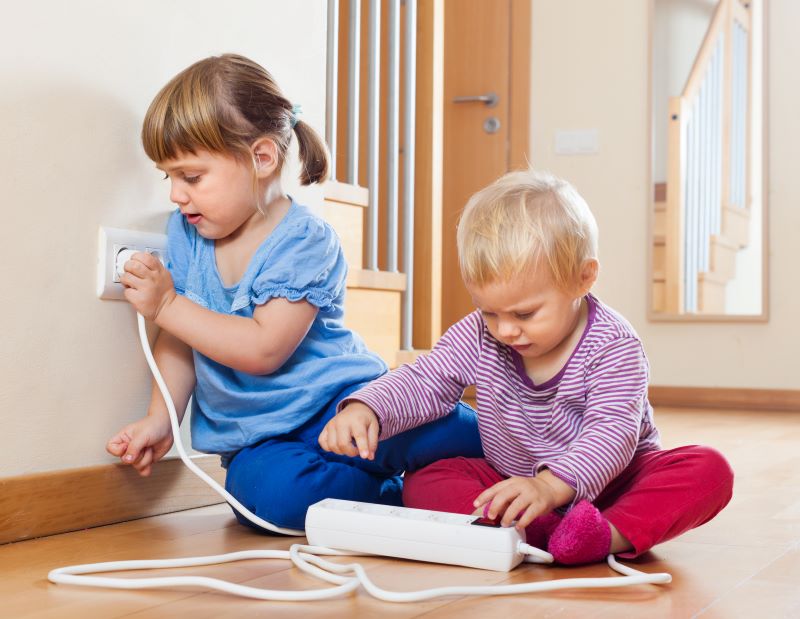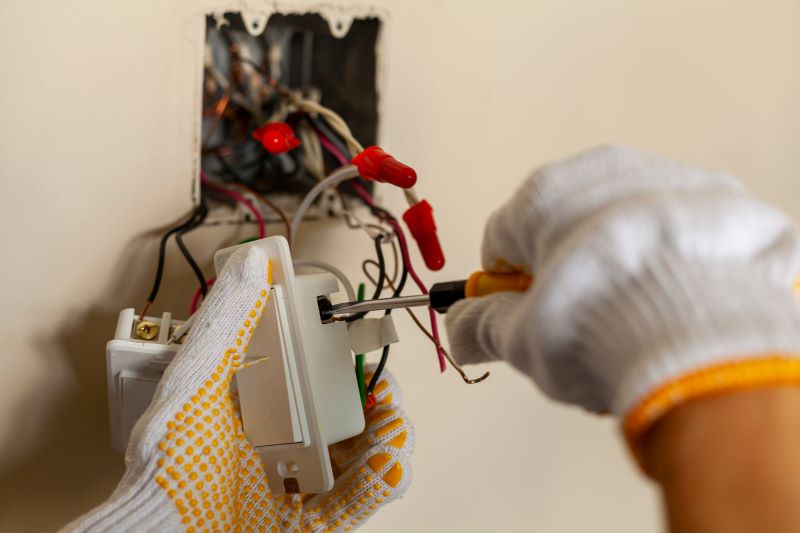Electricity is vital in many ways as it powers homes, offices, and industries, runs appliances, and facilitates communication and transportation. However, as crucial as it is, electricity can pose significant risks, especially if improperly handled. Electrical hazards can cause electrocution, burns, fires, explosions, and other serious injuries and damages.
This is why electrical safety is essential at home or the workplace. Following proper electrical safety practices and procedures can minimize the risk of accidents and injuries and ensure that you, your loved ones, or your employees stay safe and healthy. This article will cover essential electrical safety tips for staying safe and preventing home electrical hazards.
How To Prevent Home Electrical Hazards
The following are the ways to prevent home electrical hazards:
1. Install Power Boards
Installing power boards is crucial in preventing home electrical hazards. Power boards, also known as power strips, provide additional electrical outlets and protect against the overloading of circuits. Overloading can lead to overheating and potentially cause electrical fires.
It’s best to consider tips to safe power boards, such as avoiding overloading, checking the boards, and opting for good-quality panels. These will help prevent electrical hazards in your home and ensure the safety of your household.

2. Do Not Overload Socket
When too many devices are plugged into a single socket, the electrical current can become overloaded, leading to overheating, sparks, and even electrical fires. Preventing home electrical hazards is essential to avoid overloading sockets. One way to prevent overloading is using power strips or surge protectors with built-in circuit breakers.
These devices are designed to cut off the electrical current when it exceeds a safe level, preventing damage to appliances and potential hazards. It’s also essential to check the watt and ampere of the devices being plugged into a socket.
3. Keep Electrical Appliances Dry
Water is a good conductor of electricity. A small amount of moisture can cause a short circuit or electrical shock. This is especially true for appliances that are plugged in, such as toasters, blenders, and hairdryers. To prevent electrical hazards, ensure that electrical appliances are not used near water sources or damp areas such as bathrooms or kitchens.
It’s also essential to avoid using appliances with wet hands or when standing on a wet surface. In addition, ensure that all electrical appliances are unplugged and stored in a dry place when unused.
4. Install Ground Fault Circuit Interrupter
Installing a Ground Fault Circuit Interrupter (GFCI) in your home is essential to prevent home electrical hazards. A GFCI is a safety device that detects any imbalance in the electrical current and shuts off the power supply to prevent electrocution. Installing GFCIs in areas susceptible to water exposure, such as kitchens, bathrooms, and outdoor outlets, is particularly important.
So, you should test GFCIs regularly to ensure they’re functioning correctly. You can do this by pressing the ‘test’ button on the GFCI device to cut power to the outlet immediately.
5. Be Careful With Electrical Cord
Electrical cords are helpful but can pose a significant danger if not handled properly. Below are ways to consider in handling electrical cords:
- Make sure the cords are in good condition before use.
- Check for frayed wires, damaged insulation, or exposed metal that could lead to electrical shock or fire.
- Avoid using extension cords as a permanent solution, as they are not designed for long-term use and can overheat, causing a fire.
- Don’t run electrical cords under carpets or rugs to avoid damaging the cord and creating a tripping hazard.
- Always pull the plug by the plug. Never yank a cable from the wall. This can damage the cord or the plug, resulting in electrical shock or fire.
These are tips you can consider to reduce the risk of electrical hazards.
6. Replace Missing Or Broken Wall Plates
Replacing missing or broken wall plates is critical in preventing home electrical hazards. These plates cover electrical outlets and switches, providing a barrier between live electrical components and individuals. When a wall plate is missing or broken, it exposes the wiring and electrical components, creating a potential hazard.
Replacing missing or broken wall plates is a simple and inexpensive task for homeowners. It involves turning off the power to the affected outlet or switch, removing the old wall plate, and installing a new one. It’s crucial to ensure that the new wall plate is the correct size and type for the electrical component it covers. You can hire an expert to fix them to avoid potential hazards.
7. Protect Kids With Outlet Covers
Electrical outlets can be extremely dangerous for children, as they may attempt to insert foreign objects, such as toys or fingers, into the outlet. This can result in electrical shocks, burns, and other serious injuries. Outlet covers are a simple and effective way to prevent these accidents from occurring.
Outlet covers can be easily installed on all electrical outlets throughout the home, including those near the floor, which are particularly accessible to young children. These covers come in various styles, including sliding, swiveling, and hinged models, and are made from durable materials such as plastic or metal.
It’s essential to choose outlet covers designed for child safety and to ensure they’re correctly installed and maintained. Also, it’s important to supervise children around electrical devices and outlets at all times.
Conclusion
Home electrical hazards are a prevalent and serious problem with severe consequences. Typical home electrical hazards include electrical shocks, burns, fires, and electrocution; these can cause severe injury, property damage, and even death. By taking proactive steps to prevent these hazards, homeowners can ensure the safety and well-being of themselves and their families.

